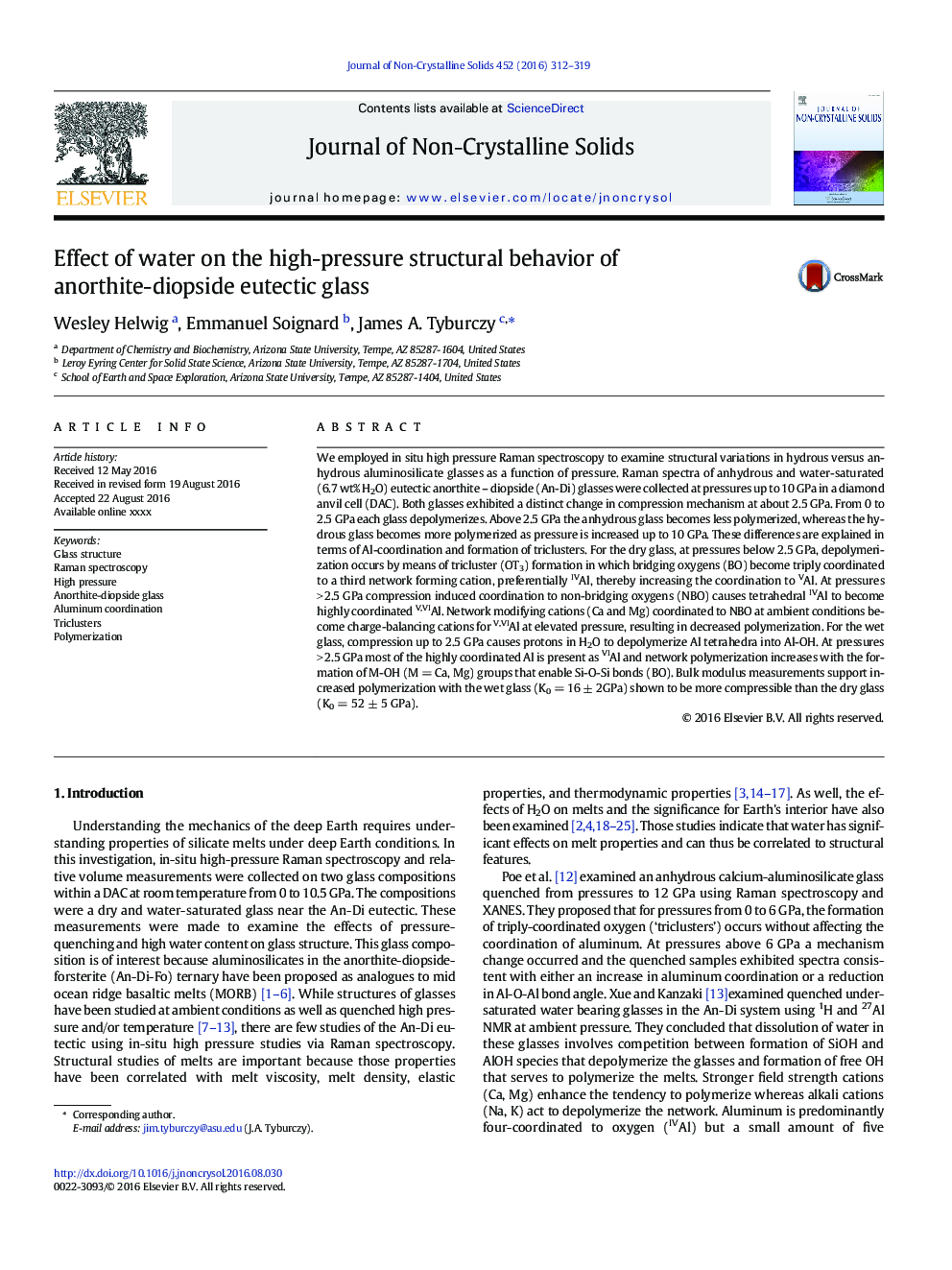| کد مقاله | کد نشریه | سال انتشار | مقاله انگلیسی | نسخه تمام متن |
|---|---|---|---|---|
| 7900696 | 1510394 | 2016 | 8 صفحه PDF | دانلود رایگان |
عنوان انگلیسی مقاله ISI
Effect of water on the high-pressure structural behavior of anorthite-diopside eutectic glass
ترجمه فارسی عنوان
اثر آب بر رفتار ساختاری فشار بالای شیشه یوتکتیک آنتوریت-دیوپسیه
دانلود مقاله + سفارش ترجمه
دانلود مقاله ISI انگلیسی
رایگان برای ایرانیان
کلمات کلیدی
موضوعات مرتبط
مهندسی و علوم پایه
مهندسی مواد
سرامیک و کامپوزیت
چکیده انگلیسی
We employed in situ high pressure Raman spectroscopy to examine structural variations in hydrous versus anhydrous aluminosilicate glasses as a function of pressure. Raman spectra of anhydrous and water-saturated (6.7 wt% H2O) eutectic anorthite - diopside (An-Di) glasses were collected at pressures up to 10 GPa in a diamond anvil cell (DAC). Both glasses exhibited a distinct change in compression mechanism at about 2.5 GPa. From 0 to 2.5 GPa each glass depolymerizes. Above 2.5 GPa the anhydrous glass becomes less polymerized, whereas the hydrous glass becomes more polymerized as pressure is increased up to 10 GPa. These differences are explained in terms of Al-coordination and formation of triclusters. For the dry glass, at pressures below 2.5 GPa, depolymerization occurs by means of tricluster (OT3) formation in which bridging oxygens (BO) become triply coordinated to a third network forming cation, preferentially IVAl, thereby increasing the coordination to VAl. At pressures > 2.5 GPa compression induced coordination to non-bridging oxygens (NBO) causes tetrahedral IVAl to become highly coordinated V,VIAl. Network modifying cations (Ca and Mg) coordinated to NBO at ambient conditions become charge-balancing cations for V,VIAl at elevated pressure, resulting in decreased polymerization. For the wet glass, compression up to 2.5 GPa causes protons in H2O to depolymerize Al tetrahedra into Al-OH. At pressures > 2.5 GPa most of the highly coordinated Al is present as VIAl and network polymerization increases with the formation of M-OH (M = Ca, Mg) groups that enable Si-O-Si bonds (BO). Bulk modulus measurements support increased polymerization with the wet glass (K0 = 16 ± 2GPa) shown to be more compressible than the dry glass (K0 = 52 ± 5 GPa).
ناشر
Database: Elsevier - ScienceDirect (ساینس دایرکت)
Journal: Journal of Non-Crystalline Solids - Volume 452, 15 November 2016, Pages 312-319
Journal: Journal of Non-Crystalline Solids - Volume 452, 15 November 2016, Pages 312-319
نویسندگان
Wesley Helwig, Emmanuel Soignard, James A. Tyburczy,
